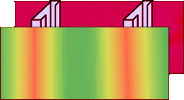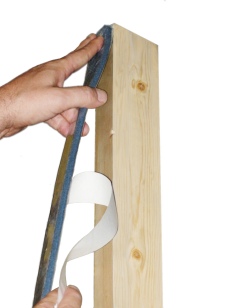Conventional wall designs defeat insulation

thermal bridging
"Steel studs are designed to provide the maximum possible conductive energy
transfer across a wall using the minimum amount of material — a thin
web with cleverly designed heat transfer fins (flanges) on both sides to
efficiently absorb heat on one side and reject it on the other. [...] It is
pointless to insulate the cavity to fight this efficiency of heat transfer."
-Joseph W. Lstiburek, Ph.D., in
ASHRAE Journal
Heating and cooling load studies have found that heat transmission through
walls is the greatest factor in energy loss in residential buildings, 8% greater than
the heat transfer through windows, and 39% greater than transmission through
roofs.
Jan Kosny, PhD., R-Value Misconceptions
Conventional construction techniques insulate the spaces between studs on exterior walls, but typically ignore the thermal bridge created by studs and other framing components. An aerogel based thermal break layer can be used to isolate conductive framing members from the building envelope, significantly reducing heat transmission through steel stud walls. Oak Ridge National Laboratories
Aerogel Breaks the Thermal Link

Applying a thermal break
Aerogels have the highest thermal insulation value of any commercially produced material, but have been too fragile for use in construction. Breakthroughs in nanofiber composite aerogel technology enable Thermablok to offer the first aerogel material specifically formulated and packaged for use in building construction. Installing 1/4" thick Thermablok strips on studs and framing members can increase the R Value of a partition up to 40%, without major design changes.
Thermablok® aerogel composite insulation can be used to control thermal
bridging in walls, roofs, and floor/ceiling assemblies. Thermablok material is
available in packaged 1/4" strips with an adhesive backing for direct application to
studs [see right] and in bulk rolls for other applications and geometries.
Thermablok Website
